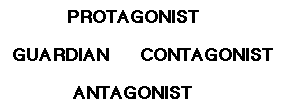Some Main Characters grow to the point of changing their nature or attitude regarding a central personal issue like Scrooge in A Christmas Carol. Others grow in their resolve, holding onto their nature or attitude against all obstacles like Dr. Richard Kimble in The Fugitive.
Change can be good if the character is on the wrong track to begin with. It can also be bad if the character was on the right track. Similarly, remaining Steadfast is good if the character is on the right track, but bad if she is misguided or mistaken.
The Main Character represents the audience’s position in the story. Therefore, whether she changes or not has a huge impact on the audience’s story experience and the message you are sending to it.
Many authors never specifically determine whether they want their Main Characters to change or not. Rather, they focus on growth and a general feeling of how things turn out. But characters don’t grow just from change; one can also grow in one’s resolve, becoming more stubbornly attached to a point of view or purpose in the face of increasing obstacles.
Only by knowing if a character changed or remained steadfast can an audience/reader understand the story’s message of success of failure, and whether the Main Character ended up happy, sad or anywhere in between.
Tighten and strengthen your story’s message by making an explicit choice of change or steadfast, clearly convey that choice at your story’s moment of climax, and then use the conclusion (denouement) of your story to show whether that choice was the proper one to make and why.








